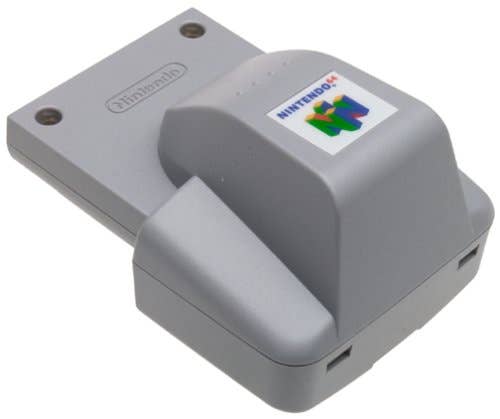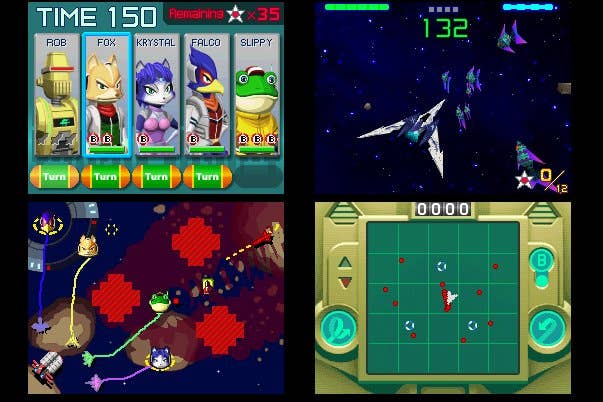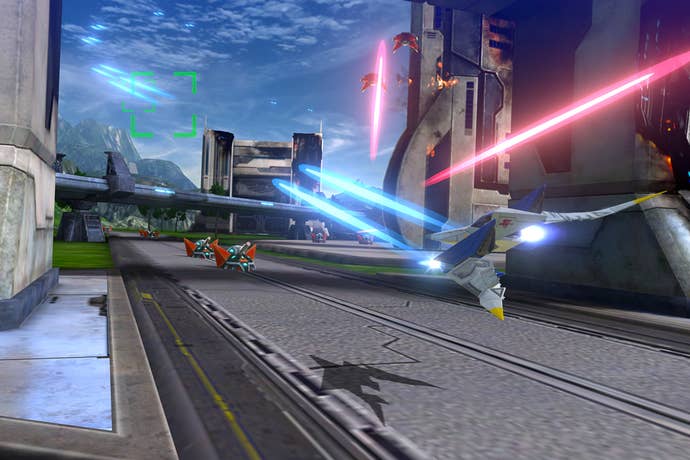Star Fox's History of Innovation, For Better or Worse
Star Fox Zero will be the latest game in the series to lean on innovation. Here are a few of the previous attempts, and whether they were ultimately successful.
This article first appeared on USgamer, a partner publication of VG247. Some content, such as this article, has been migrated to VG247 for posterity after USgamer's closure - but it has not been edited or further vetted by the VG247 team.
Star Fox was a miracle when it launched on the Super Nintendo in early 1993.
Developed in part by Argonaut Software, a studio that included a young Dylan Cuthbert, it pushed the Super Nintendo to the absolute limits. It looks dated now, but at the time Star Fox's polygonal graphics were sleek and cool, and well beyond anything available on the competition. For many console gamers, it was their first real experience with true 3D graphics.
Star Fox was just one game in the technical arms race that erupted between Sega and Nintendo in the early '90s. Where Sega touted its faster processor and add-ons like the Sega CD, Nintendo pushed the limits of contemporary 3D technology with Star Fox, and a year and a half later, Donkey Cong Country. Star Fox benefited from a memorable cast - Shigeru Miyamoto's decision to marry its advanced visuals with cute animal characters was inspired in the way that it made it less abstract and more relatable - and it was a solid shooter to boot, but there was no question that the technology was the star of the show.
In the years since, most Star Fox games have pushed some sort of technical innovation, including the upcoming Star Fox Zero. The only real exceptions are the Namco-developed Star Fox Assault and the odd spinoff Star Fox Adventures - games that were farmed out to separate developers. Otherwise, the series has generally treated a new entry as an opportunity to experiment with some new bit of tech or a control scheme. Here's a look at some of the attempts to date:

Star Fox 64: The Rumble Pak
What it offered: Force feedback was a relatively new and excited innovation in 1997. Force feedback joysticks and steering wheels had started to appear in the PC scene, but Star Fox 64 was an attempt to bring force feedback to consoles in a more meaningful fashion than the Aura Interactor. It was the first N64 game that was compatible with the Rumble Pak - a battery-powered controller attachment that would vibrate at key moments. It was packed in with every copy of Star Fox 64 and touted as one of the game's major selling points.
Did it work? Yep. Star Fox 64 made liberal use of the Rumble Pak, from explosions to alerting you that ROB 64 was calling, and the novelty of force feedback quickly became a default feature. In the years that followed, the majority of Nintendo 64 games wound up supporting the Rumble Pak, though its hunger for AAA batteries was certainly a drawback. Sony also took note, releasing the first DualShock controller just a few months later. Force feedback support eventually became so ingrained that gamers actively rebelled when Sony tried to remove it from the PlayStation 3. Star Fox 64 wasn't exactly the first game to utilize force feedback, but its role in popularizing it can't be ignored.
Star Fox Command: Touchscreen controls
What it offered: The launch of the Nintendo DS prompted a lot of experimentation with its new touchscreen controls - a novelty in the pre-smartphone era. Star Fox Command hopped on the bandwagon with stylus-driven controls that acted as a substitute for an analog joystick, and most of the other controls as well. The stylus was used to move the Arwing, with double-taps and swipes being used to brake, accelerate, and perform barrel rolls. Outside of combat, the stylus was used to move ships on a strategic map, adding a new dimension to Star Fox's traditional shooting action.

Did it work? Mostly. The touchscreen controls weren't perfect; but in the absence of an analog stick, they got the job done. They only became an issue during boss battles, where small movements could spell the difference between life and death. Star Fox Command's problem was more its attempt to reduce the franchise's trademark hand-scrafted stages to bite-sized chunks with limited objectives, which became repetitive after a while. Star Fox Command brought with it a lot of interesting ideas, as well as some bizarre (but hilarious) canonical endings, but the game itself never quite gelled. Too bad.
Star Fox 64 3D: 3D graphics and motion controls
What it offered: It tends to get short shrift these days; but back in 2011, people were legitimately excited that the Nintendo 3DS offered stereoscopic 3D without the need for glasses. Hence, Star Fox was seen as a perfect fit for the platform, and Nintendo made good on that promise by partnering Q-Games to produce a remake of Star Fox 64 with stereoscopic 3D graphics. Q-Games and Nintendo weren't just content to add 3D and call it a day, though, so they also made it possible to steer the Arwing with the system's gyroscope, reasoning that it would make Star Fox 64 more intuitive for younger players.
Did it work? The motion controls definitely didn't work. It didn't take long for developers to realize that motion controls were fundamentally at odd with 3D - the need to tilt the console threw off the balance of the graphics - and Star Fox 64 3D was no different. What's more, the motion controls were too imprecise for the type of precision that Star Fox 64 demanded. With that, most fans quickly turned off the motion controls and forgot about them. The 3D, however, was well-received for the way that it enhanced Star Fox 64's depth of field and added to the sensation of flight. It wasn't exactly a system seller, but it definitely made it worth keeping the system's 3D turned on.

Star Fox Zero: Second screen controls
What it offers: In 2014, Nintendo set out to find new and interesting applications for the Wii U Gamepad, which had been to that point underutilized by developers. One result is Star Fox Zero, which combines gyroscopic controls with second screen functionality for higher accuracy (at least in theory). It is the latest example of the series attempting to utilize its platform's hardware to the fullest extent possible.
Does it work? Yes. Mostly. Now that I've managed to get the hang of Star Fox Zero's motion controls, I think they're fine. I'll have more to say in my review later this week.
Looking back over the history of the series, Star Fox's attempts at experimentation have been mostly successful. Even Star Fox Command's touchscreen controls weren't all that bad. But on wedding the series to various gimmicks, developers have eroded the franchise's core strength - its shooting. Even Star Fox Assault, which didn't rely on any particular technical innovation, was criticized for largely ditching the franchise's trademark vehicles in favor of having Fox run around on foot. As a result, the franchise's quality is generally seen as being uneven at best.
Will Star Fox Zero buck that trend? The second round of previews have been a bit more positive, but initial impressions weren't great. Needless to say, Star Fox Zero will have to be really good to win over skeptical fans. But say this for Nintendo: they aren't afraid to take risks with what many people consider a classic franchise. And that isn't likely to change anytime soon.


